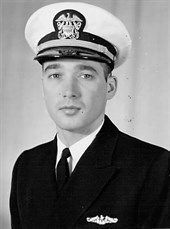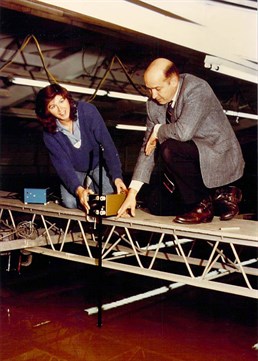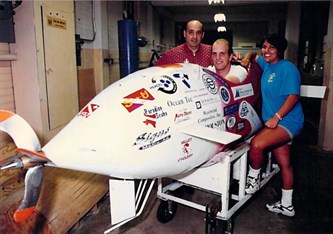From walk-on college basketball player to influential mentor for students and faculty, Dr. Robert Randall has come full circle in his 42-year career in academia.
Randall, the W.H. Bauer Professor in Dredging Engineering in the Department of Ocean Engineering at Texas A&M University, attended Ohio State University and earned a bachelor’s degree in mechanical engineering.
“I lived near Akron, Ohio, and went to Cuyahoga Falls High School,” Randall said. “My parents moved back to Columbus, Ohio, which led me to Ohio State.”
Service-minded
As an undergraduate student, Randall wanted to play sports in college, specifically basketball and baseball. He survived two-and-a-half years as a walk-on basketball player before deciding to join the Navy ROTC program.

“In my college days you were going to get drafted,” Randall said. “I decided that I would prefer to not be drafted, but be an officer in the military, so I joined the Navy ROTC and a year later I was awarded a four-year scholarship.”
The scholarship required Randall to serve in the U.S. Navy for another four years after graduation, giving him the opportunity to work on submarines. In the years following, Randall began to develop a deep interest in the oceans of the world, sparking his career in ocean engineering. He attended the University of Rhode Island, where he received his master’s and doctoral degrees in ocean engineering.
“After the Navy, I took a job at an organization in Florida that was basically an oceanographic research institute dealing with designing and operating research submarines and submersibles,” Randall said.
Academia calls
Randall quickly realized this was not the career path he envisioned for himself and began to search for teaching and research opportunities in academia.
“I looked at Virginia Tech, the University of Delaware, the University of Rhode Island and then Texas A&M came into the fold,” Randall said. “I came to College Station, flew into Easterwood Airport on a 10-passenger plane, and knew this was the place to begin an academic career and raise my family.”
Randall visited the Zachry Department of Civil Engineering that had just started a separate degree-granting program in ocean engineering, and he decided to jump on this opportunity.
“My wife, Barbara, did not see the area before we moved here,” Randall said. “I brought her from Florida to College Station through Conroe, Texas, so it was less of a shock to her because the trees were nice and tall all the way until you got to College Station.”
Forty-two years later, the couple has never regretted their cross-country move.
“While I have had other offers through the years, I did not think they were any better than where I was,” said Randall, “and I enjoyed bringing up my children here.”
Impactful research
During his time at Texas A&M Randall has brought in and worked on many projects, ranging from dredging to coastal and offshore systems.

“The first project I had was in 1977 and called the strategic petroleum reserve project, which was a national U.S. project to store oil in caverns,” Randall said. “We were tasked to perform the environmental evaluation for the salt caverns all along the Gulf of Mexico. Since I was doing the offshore engineering, I designed the system to track the brine plumes that were coming out of a buried pipeline and discharged through a diffuser into the Gulf of Mexico.”
In the late 1980s, Randall began teaching the ocean engineering senior design course and incorporated the help of the ocean engineering industry. The students completed design projects and submitted final reports to design competitions sponsored by the Society of Naval Architects and Marine Engineers, and were successful in receiving many awards.
Other projects have involved the Corps of Engineers where Randall worked one year at the Engineering Research and Development Center in Vicksburg, Mississippi, and taught courses in Marine Dredging and Underwater Acoustics, and conducted research related to dredging and coastal engineering. He also conducted research on dredging, dredged material placement and capping of contaminated sediments.
“The next big project that I am really proud of was to work on the National Science Foundation proposal to develop a new ocean, coastal and dredging laboratory in the ‘90s,” Randall said. “There was probably three faculty involved, and I was the one that designed the facilities, wave basin, towing tank and the dredge carriage.”
Randall served as director of the Haynes Coastal Engineering Laboratory from 2009 to 2015.
Going above and beyond
Following Dr. John B. Herbich’s retirement in 1993, Randall became director of the Center for Dredging Studies and assumed responsibility for organizing the annual dredging engineering short courses. He also was appointed to the board of directors for the Western Dredging Association (WEDA) and served as editor of the annual WEDA/Texas A&M dredging technical conference proceedings.

He also collaborated with Peter deJong, president of Digital Automation and Controls Systems, to develop a dredge simulator course in which Randall built the educational side of the course and deJong built the simulators.
“I developed all the dredging exercises, and the team of myself, Pete and my graduate students worked out pretty well,” Randall said. “We started this course in 1999 and the last one was in 2016. I think we have had over 2,000 people come through 16 years of the course held two or three times per year.”
Teaching the dredging short courses to thousands of people all over the world could constitute a famous status in some countries.
“I recently took my dog to the veterinarian, who is from South Africa,” Randall said. “He told me that I was famous in South Africa because he knew someone from there who went through my course.”
Humble appreciation
Beyond the research, Randall quickly realized a newfound passion of teaching the next generation. He enjoyed serving students and professional societies that aligned with his passions and areas of expertise.
“Aggies are special and the Aggie ocean engineers that I worked with were particularly special and a joy to work beside,” Randall said. “Being able to work with those young people who are now out there working in the industry is so nice to see and to reflect back upon.”
Randall was the undergraduate advisor for ocean engineering students for 24 years. He has been a faculty advisor for all ocean engineering student organizations, and initiated the first ocean engineering student chapter of the Marine Technology Society. He also started the human-powered submarine student team in 1991, and students continue to build and race their submarines at national and international race sites.

Randall has served as a mentor to thousands of ocean engineering students that have stepped into his office and classroom each semester for the last 42 years, but he often reflects on the mentors in his life who have helped him reach the accomplishments of today.
“My graduate advisor at the University of Rhode Island, Frank White, was the one who taught me how to conduct research,” Randall said. “At Texas A&M, Dr. Herbich hired me and gave me the opportunity to work in ocean engineering and dredging, and I knew nothing about dredging when I came here. Dr. Roy Hann was the principal investigator on the strategic petroleum reserve project in 1977. He gave me the opportunity to manage the offshore activities for the project, which involved conducting offshore research, scheduling ship time, buying a research vessel, hiring people and scheduling all the cruises for the other faculty principal investigators.”
Because of his mentors, Randall held himself to the highest standard as he continued to build his career. In turn, he pushed each of his students to pursue nothing short of excellence.
“Students must be willing to work hard to succeed today,” Randall said. “That means that you are willing to say ‘yes, I will do this,’ then follow through and do your best.”
Randall’s devotion to the field of ocean engineering is unmatched.
“I think most students have this idea in their head that they would like to be successful, but if you take a job, work hard at it and just enjoy what you are doing, then I think that is when you have reached success,” Randall said.